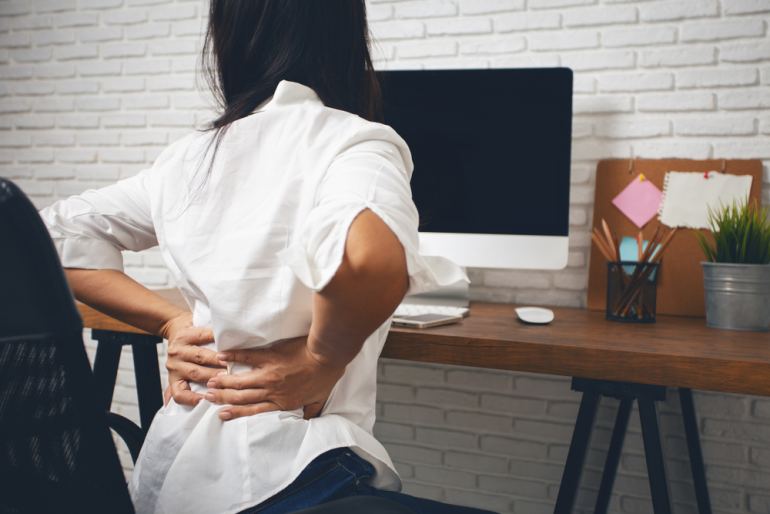
The Sitting Trap: How Your Office Chair is Killing Your Circulation
Sitting for long periods is a modern-day plague caused by working too hard and not listening to our bodies and giving them what they need to be most healthy. We're chained to our desks, glued to our screens, and our bodies are paying for it. One of the biggest culprits? Poor circulation. The reality is that poor circulation can lead to something more damaging or concerning, so making life changes to fix this problem early is critical.
Symptoms: What symptoms do you need to be aware of when it comes to poor circulation?
- Numbness and tingling: Especially in the legs and feet.
- Aching and cramping: Can feel like pins and needles or a heavy, tight sensation.
- Coldness: Your extremities might feel icy even in a warm room.
- Swelling: Particularly in the ankles and feet.
- Fatigue: You might feel drained and sluggish even after a good night's sleep.
From a medical point of view, poor circulation is not good.
Normally, your heart pumps blood, carrying oxygen and nutrients throughout your body. Veins return the used blood, aided by muscle contractions. But sitting disrupts this delicate dance:
- Blood pools: Without movement, blood gets stuck in your legs and feet.
- Veins weaken: Over time, constant pressure can damage vein walls.
- Blood flow slows: Less oxygen and nutrients reach your cells.
- Waste builds up: Toxins can't be efficiently removed, causing fatigue and discomfort.
Causes of Poor Circulation
While sitting is a major culprit, other factors can worsen poor circulation:
- Age: As we age, our veins naturally become less elastic, so there is a certain amount of allowance that everyone has to give to age.
- Weight: Carrying extra pounds puts more strain on your circulatory system.
- Smoking: Damages blood vessels and reduces blood flow.
- Certain medications: Can have side effects that affect circulation.
- Underlying conditions: Diabetes, heart disease, and others can contribute.
Treatment Options: What You Need to Do to Improve Circulation
If you're experiencing symptoms, don't just sit there! Talk to your doctor. They can assess your situation and recommend:
- Lifestyle changes: Exercise is key! Aim for at least 30 minutes of moderate activity most days.
- Compression socks: Can help squeeze blood back up your legs.
- Medications: To improve blood flow or address underlying conditions.
- Elevation: Prop your legs up when resting to encourage blood flow back to your heart.
Natural Remedies: Boosting Circulation from Within
Nature offers some handy tools too:
- Drink plenty of water: Hydration keeps your blood thin and flowing.
- Eat a healthy diet: Focus on fruits, vegetables, and whole grains, rich in vitamins and antioxidants.
- Manage stress: Chronic stress can constrict blood vessels. Try relaxation techniques like yoga, pilates, breathe work or meditation.
- Warm baths or showers: Can temporarily improve blood flow and soothe muscles or alternatively ice baths.
- Massage therapy: Can help loosen tight muscles and promote circulation.
10 Tips to Get Your Blood Pumping in the Office:
- Set a timer and stand up every 30 minutes: Do some stretches, walk around, or even just grab a glass of water. This is hard to do because you can’t waste too many minutes when you are on the clock.
- Invest in a standing desk: Alternate between sitting and standing throughout the day.
- Use an under-desk footrest: Elevate your legs to improve circulation and reduce leg strain.
- Do chair yoga or desk stretches: Simple movements can get your blood flowing without leaving your seat.
- Squeeze a stress ball: This can improve circulation in your hands and forearms.
- Walk during your lunch break: Get some fresh air and sunshine to boost your mood and circulation.
- Take the stairs instead of the elevator: Every step counts!
- Wear loose-fitting clothing: Tight clothes can restrict blood flow.
- Wiggle your toes and ankles regularly: Even small movements can help and actively setting a routine similar to micro class just for your feet, legs and toes can help.
- Stay hydrated: Keep a water bottle handy and sip throughout the day. Drink at least 8 glasses of water per day.
Remember, small changes can make a big difference. Listen to your body, move your body, and don't let your office chair become your circulation's worst enemy.



Leave a comment
Make sure you enter all the required information, indicated by an asterisk (*). HTML code is not allowed.